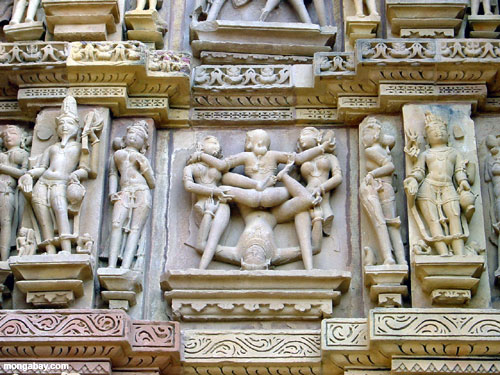A biography of the world's most famous sex manual
By Michael Dirda
Washington Post

Years ago, a bunch of us were sitting around drinking when I heard a friend murmur two sentences I have never forgotten. "You know, guys, sex is the greatest thing in the world." He paused and we were all about to nod in agreement. He was, after all, a noted and knowledgeable ladies' man. Unexpectedly, though, he then added, with infinite wistfulness: "But it's just not that great."
There, in that gulf between the reality and the dream, lies the domain of pornography, the sex industry and the masturbatory fantasy -- of Viagra and the midlife crisis. Our Western myths of love are seldom about fulfillment; they are all about yearning. In Plato's Symposium we are told that the gods divided the original ball-like human beings in two, and that we consequently spend our lives searching for the other half who will complete us. So-called romantic love, which first blossomed in 12th-century France, revels in passion delayed, forbidden or otherwise thwarted. Its real theme is desire.
But for the Western imagination, the East has long represented an escape from this pervasive sexual unhappiness. Baudelaire spoke of tropic realms of "luxe, calme et volupté"; Hawaii and Tahiti once beckoned as Edens of innocent voluptuousness. From the 18th century on, the Orient, in general, seemed a perfumed garden, offering the tender attentions of geishas, bare-breasted island girls and pretty boys. Here, amid erotic graciousness, the darkness of sin was unknown. And yet, even this scented, sensual wonderland turned out to have its guide, its bible: The Kamasutra, sometimes subtitled "The Hindu Art of Love."
The title alone summons visions of exceedingly ambitious sexual postures. Yet the real Kamasutra is even more fascinating than its myth. In his "biography" of this Sanskrit classic, James McConnachie starts by exploring the philosophical and historical background of its 3rd-century text. "Kama" is the Sanskrit word for sexual pleasure or delight; a "sutra" is "a scholarly treatise designed to compress knowledge into a series of pithy maxims." The Kamasutra itself is a work of consolidation or reclamation, since its author, Vatsyayana, tells us that he was building on seven earlier treatises about love (all now lost). It was intended "to be a contribution to the great scientific project of the era: the composition of authoritative studies of all aspects of human behaviour and understanding." Other treatises were devoted to dharma -- a word associated with law, justice, duty and principle -- and artha, which covered worldly success.
Under the Gupta dynasty, 3rd-century India developed a highly aesthetic urban culture, and Vatsyayana's intended readers were young men about town, who frequented the theater, practiced the arts and lived playboy lives devoted to pleasure. His treatise (or shastra) is divided into seven "books." In Wendy Doniger and Sudhir Kakar's 2002 translation, these are: General Observations, Sex, Virgins, Wives, Other Men's Wives, Courtesans, and Erotic Esoterica. Full of details from contemporary life, The Kamasutra is highly dramatic and has been likened to an extended play. It also strives to establish sex as a humane activity, a cultivated art that rejects both confining Buddhist morality and unchecked sexual aggression.
In the notorious Book Two, Vatsyayana describes 64 kama-kalas, or ways to make love. Surprisingly, these are not 64 positions, notes McConnachie, "but simply a kind of grand total of the categories into which Vatsyayana divides the different moods and modes of lovemaking. Theorists, Vatsyayana says, divide sex into eight different topics, namely 'embracing, kissing, scratching, biting, the positions, moaning, the woman playing the man's part, and oral sex.' As each of these modes of sex is supposed to have eight different particular manifestations, there are thus sixty-four ways in which a man or woman could be said to be having sex in its broadest sense." But, as McConnachie emphasizes, "the kama-kalas are not just tools for successful love making," they also "lie at the heart of what constitutes an educated man."
To Read the Rest of the Review
No comments:
Post a Comment